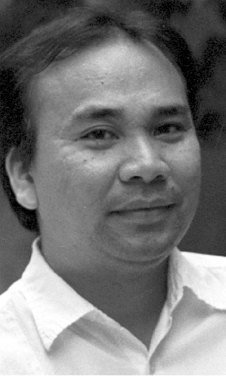
Jobers Bersales
In the thick of finishing a chapter on Chinese demographics and commercial history in Cebu during the American colonial and early post-war periods for an upcoming book, the opportunity to visit their places of origin in China dropped like manna from heaven.
Members of a lan-lang (full-blooded) Chinese family now on its fourth generation in Cebu invited me to join them as they visited their hometown of Giok-Ong in the Quanzhou district of Fujian, the southeastern coastal province where many Chinese sojourners left home via the port of Amoy (or Xiamen in Mandarin) to try their luck in “Nanyang” as they call Southeast Asia.
For six days, I was witness to the close personal connections that this commercially successful Cebu-based family, whose business interests have gone national if not global, had with their patriarch’s hometown (“qiaoxiang” in Mandarin), as well as the first place in Mindanao where he made his fortune only to be squandered by World War II.
Given their desire for privacy — plus the obvious humility and self-effacement that I was witness to ever since I accepted their request to help write their family history — their names shall remain anonymous.
It is sufficient to say that the trip to Quanzhou (Chuanchow in Hokkien), with a daylong tour of Xiamen, was exhilarating and extremely important for me as much as for them. It was in Xiamen (or Amoy/Emoy of old) where thousands of Chinese boys, barely in their teens, left during the last four centuries, many of them returning only to die. One of those was this family’s patriarch, who left as an adolescent to carve out a name for himself, leaving a village that provided no opportunities for the poor then. From time to time he would return, first to marry, then to spend a few months to produce an offspring.
We visited his ancient home in a village of just 1,800 residents, now sporting a new six-lane concrete highway devoid of traffic amid three story houses of concrete and nickel-plated doors and windows. Fortunately, despite the pogrom that followed Mao Ze-Dong’s Cultural Revolution (1968-1978), the ancestral house of brick and stone survived to the present.
There is no doubt that the economic success that has characterized the People’s Republic of China ever since Den Xiao Ping encouraged everyone to be rich and be happy nearly three decades ago has reached this tiny corner of Jinjing City in Quanzhou.
There is a sad footnote to this visit, by the way, when we went to the beautiful and oh-so modern Quanzhou Maritime Museum where so very few artifacts of the past are on display, mostly ceramics. These objects clearly escaped the burning of books and the destruction of what were then labeled during the chaotic Cultural Revolution as the trappings of bourgeois or capitalist life.
Nevertheless, China has clearly not dwelled too much on the errors of the past and has moved forward at such dizzying speed. On one eight-lane highway we all marveled at a long line of factories and showrooms of granite and marble stone slabs as well as tiles of all kinds.
I was reminded of Kyoto in Japan as we drove through multitudes of high rise public and private condominiums, a series of twin four-lane tunnels (one heading out, the other coming into the city without both tubes ever seeing each other and thus avoiding accidents), subway trains crisscrossing cities and shiny brand-new China-made SUVs. And these are just the most immediate signs of economic success.
Despite this, however, China has preserved whatever is left of its past. We went to a fortress guarding the port of Xiamen and toured a relocated village in Jinjiang called Wudianshi (“Five Shops District”), which contained structures dating even to the Yuan and Ming dynasties, teeming with local tourists.
We also walked a 1200-meter long stone bridge built during the Song Dynasty (about a thousand years ago). Then on our last day, we went to the authentic Chua clan village in Quanzhou where many Chua scions in the Philippines come from.
China’s economic success got personal and up close when I was told that when the Cebu-based family decided to pay for our accommodations their relatives that hosted us gently but with firm resolve turned down the offer stating that their lives were now different from the last visit made in the mid-1990s, and that they could now afford.
(Mind you, do not be fooled by the unassuming name of our hotel, Quanzhou Guest House. It’s a four-storey edifice sitting on top of a hill. Our rooms reminded me of the suites Shangri-la Mactan Hotel but at a discounted rate of 1,700 in Philippine pesos each!).
Clearly fortunes have changed for the better, for both sides of this family. And I certainly hope that the same will hold true not just for one side, China, but also for the other, the Philippines, as the Duterte government gets ever cozy with this economically powerful neighbor.
Disclaimer: The comments uploaded on this site do not necessarily represent or reflect the views of management and owner of Cebudailynews. We reserve the right to exclude comments that we deem to be inconsistent with our editorial standards.
